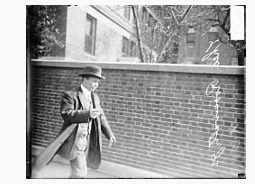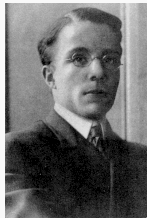

Theodore "Ted" Roosevelt III (generally known as Theodore, Jr.) (September 13, 1887 – July 12, 1944), was an American political and business leader, a veteran of both the 20th century's world wars, who was awarded the Medal of Honor. He was the eldest son of President Theodore Roosevelt and Edith Roosevelt.
Roosevelt was instrumental in the forming of the American Legion in 1919. He later served as Assistant Secretary of the Navy, Governor of Puerto Rico (1929–32),Governor-General of the Philippines (1932–33), Chairman of the Board of American Express Company, and Vice-President at Doubleday Books, and as a Brigadier General in the United States Army.
Childhood
Ted was the eldest son of President Theodore "T.R." Roosevelt, Jr. and Edith Kermit Carow. He was born at the family estate in Cove Neck, Oyster Bay, New York, when his father was just starting his political career. His siblings were brothers Kermit,Archie, and Quentin; sister Ethel; and half-sister Alice.
Like all the Roosevelt children, Ted was tremendously influenced by his father. In later life, Ted recorded some of these childhood recollections in a series of newspaper articles written around the time of World War I. One day when he was about nine, TR gave young Ted a rifle. When Ted asked if it was real, his father loaded it and shot a bullet into the ceiling.[2]
When Ted was a child, his father initially expected more of him than of his siblings – an added burden that almost caused him to suffer a nervous breakdown.[3]
In one article, Ted recalled his first time in Washington, ".....when father was civil service commissioner I often walked to the office with him. On the way down he would talk history to me—not the dry history of dates and charters, but the history where you yourself in your imagination could assume the role of the principal actors, as every well-constructed boy wishes to do when interested. During every battle we would stop and father would draw out the full plan in the dust in the gutter with the tip of his umbrella. Long before the European war had broken over the world father would discuss with us military training and the necessity for every man being able to take his part."[4]

Ted at Mercy Hospital after his father's October 14, 1912 shooting (October 17, 1912)
Education and early business career

Ted at Harvard University
The boys attended private schools, Ted at Groton School. Before he went to college, he thought about going to military school. Although not naturally called to academics, he persisted and graduated from Harvard College in 1909, where, like his father, he joined the Porcellian Club; his younger brother Quentin sailed through college there.
After graduating from college, Ted entered the business world. He took positions in the steel and carpet businesses before becoming the branch manager of an investment bank. He had a flair for business and amassed a considerable fortune in the years leading up to World War I and on into the 1920s. The income generated by his investments positioned him well for a career in politics after the War.
Political career
After service in World War I (see below), Roosevelt began his political career. In 1919 he was elected to the New York State Assembly.[5] Grinning like his father, waving a crumpled hat, and like his father, shouting "bully", Ted participated in every national campaign that he could, except when he was Governor-General of the Philippines and on the other side of the globe.
In 1921, when Warren G. Harding was elected president, Roosevelt was appointedAssistant Secretary of the Navy. He oversaw the transferring of oil leases from the navy to private corporations. The navy's petroleum reserves consisted of three fields (which had been established by President Taft); Naval Petroleum Reserve No. 3, Teapot Dome Field, Natrona County, Wyoming; and Naval Petroleum Reserve No. 1 at Elk Hills Oil Field and Naval Petroleum Reserve No. 2 Buena Vista Oil Field, both in Kern County, California. In 1922, Albert B. Fall, U.S. Secretary of the Interior, leased, without competitive bidding, the Teapot Dome Field to Harry F. Sinclair of Sinclair Consolidated Oil Company, and the field at Elk Hills, California, to Edward L. Doheny of Pan American Petroleum & Transport Company.
During the transfers, while Roosevelt was Assistant Secretary of the Navy, his brotherArchie was vice president of the Union Petroleum Company, the export auxiliary subsidiary of the Sinclair Consolidated Oil. The leasing of government reserves without competitive building, plus the close personal and business relationships among the players, led to the deal being called the Teapot Dome scandal. The connection between the Roosevelt brothers could not be ignored. After Sinclair sailed for Europe to avoid testifying, G. D. Wahlberg, Sinclair's private secretary, advised Archibald Roosevelt to resign to save his reputation.[6] Although both Archibald and Ted Roosevelt were cleared of all charges, their images were tarnished.
In 1924, Roosevelt was the Republican nominee for Governor of New York. His cousin Franklin Delano Roosevelt (FDR) spoke out on Ted's "wretched record" as Assistant Secretary of the Navy during the oil scandals. Anna Eleanor Roosevelt played her part as well; she campaigned vigorously to link Ted to the recent Teapot Dome Scandal. She followed his campaign in a car aroundNew York State with a steaming teapot on its roof.[7] Eleanor used that campaign tactic after Ted commented of FDR, stating "He's a maverick! He does not wear the brand of our family."
Eleanor had been infuriated by these remarks. She would later decry these methods, admitting that they were below her dignity but saying that they had been contrived by Democratic Party "dirty tricksters." Ted never forgave Eleanor for her stunt, though his elder half-sister Alice did, and resumed their formerly close friendship. These conflicts served to widen the split between the Oyster Bay TR and Hyde Park FDR wings of the Roosevelt family. Because of Eleanor's efforts, Ted lost the support of many of his would-be voters. His opponent, incumbent governor Alfred E. Smith, defeated him by 105,000 votes. But in the simultaneous race for President, the Republican Calvin Coolidge won New York by over 850,000 votes.
Death
Theodore Roosevelt Jr.'s grave marker at the American World War II cemetery in Normandy. He lies buried next to his brother, Quentin, who was killed during World War I.
Throughout World War II, Roosevelt suffered from health problems. He had arthritis, mostly from old World War I injuries, and walked with a cane. He also had heart trouble.
On July 12, 1944, a little over one month after the landing at Utah Beach, he died suddenly of aheart attack near Sainte-Mère-Église in Normandy, France. He was living at the time in a converted sleeping truck, captured a few days before from the Germans. He had spent part of the day in a long conversation with his son, Captain Quentin Roosevelt II, who had participated with him in the Normandy landing. He was stricken at about 10 pm and died, attended by medical help, at about midnight. He was fifty-six years old. On the day of his death he had been selected by General Omar Bradley for promotion to major general and orders had been cut placing him in command of the 90th Infantry Division. These recommendations were sent to General Dwight D. Eisenhower for approval, but when Eisenhower called the next morning to approve them, he had to be told that Roosevelt had died during the night.
Roosevelt was buried at the American cemetery in Normandy, initially created for the Americans killed in Normandy during the invasion. He now lies next to his younger brother, LieutenantQuentin Roosevelt. Quentin, a pilot, had been killed in France during World War I and was initially buried at the Oise-Aisne American Cemetery and Memorial for veterans of WWI at Fère-en-Tardenois, France, near where Quentin had been shot down in that war, but was exhumed in 1955 and moved to the Normandy cemetery, in order to be re-interred next to his brother.
Family
On June 20, 1910, Ted married Eleanor Butler Alexander (1888–1960), daughter of Henry Addison Alexander and Grace Green. Ted and Eleanor had four children: Grace Green Roosevelt (1911–1993), Theodore Roosevelt IV (1914–2001), Cornelius Van Schaack Roosevelt III (1915–1991) and Quentin Roosevelt II (1919–1948).[21]



















